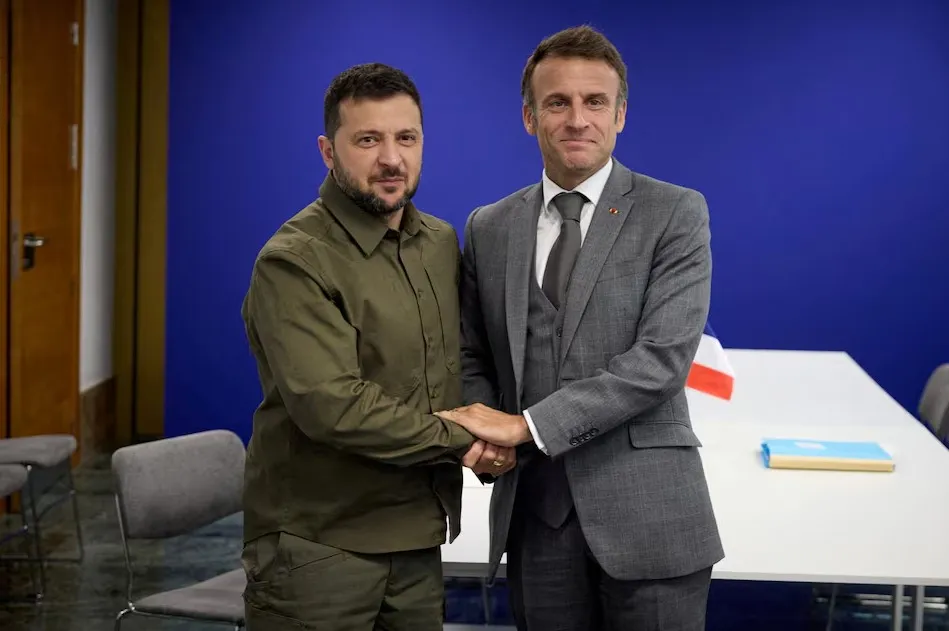大家好,小编今天为大家解答这个问题:俄驻华大使中文聊中国春节习俗,关于俄外交部女发言人用中文祝贺农历新年 的介绍内容,还有许多小伙伴还不清楚,让我们一起看看吧!
本文目录一览:
普京任命俄罗斯驻华大使,曾被俄媒称为“中国通”!他对中国文化有何了解?
莫尔古洛夫出生于1961年5月4日。他会说中文和英文。1983年至1984年期间,他在北京语言大学短期留学。留学结束后,直到1991年,他才开始在俄罗斯外交部工作。近年来,莫尔古洛夫参与了中俄双边关系的一系列大事件,并多次就涉华问题发声。今年6月,莫尔古洛夫在第七届“俄罗斯与中国:新时代的合作”会议上表示,俄中年贸易额或将在2022年底达到2000亿美元。莫尔古洛夫认为,中国阻止了新冠疫情在其境内传播,“我相信,我们都受益于中国的经验。”莫尔古洛夫表示,俄罗斯支持中国的方法,并在抗击疫情和防止疫情再次暴发等全部问题上与中方进行积极互动。
中国和俄罗斯都是怎样过春节的?
【中国】
在春节期间,中国的汉族和一些少数民族都要举行各种庆祝活动。这些活动均以祭祀祖神、祭奠祖先、除旧布新、迎禧接福、祈求丰年为主要内容,形式丰富多彩,带有浓郁的各民族特色。受到中华文化的影响,属于汉字文化圈的一些国家和民族也有庆祝春节的习俗。人们在春节这一天都尽可能地回到家里和亲人团聚,表达对未来一年的热切期盼和对新一年生活的美好祝福。
春节不仅仅是一个节日, 同时也是中国人情感得以释放、心理诉求得以满足的重要载体,是中华民族一年一度的狂欢节和永远的精神支柱。
【俄罗斯】
俄罗斯像中国一样,除公历外,还有古老的民间历法。根据东正教的历法,圣诞节和新年要比欧洲的节日晚两个星期。也就是说,1月7日是俄历圣诞节;1月14日是俄历新年。
提及俄罗斯庆祝的公历新年,还有一段长长的历史。最初其实俄罗斯民族的新年是每年初春时分的3月1日。因为俄罗斯大地靠近北极地区,春季到来的时间要比其它地区来的晚。那时候,每年的3月1日当天都会举行祭祀太阳的隆重仪式。15世纪末期,受到拜占庭的影响,俄罗斯又将新年改至每年的9月1日,并一直持续到1699年才由彼得大帝依照西欧各国的传统习惯改为今天的1月1日。
俄罗斯新年是一年中最为隆重,最具民族特色的俄罗斯传统节日。每一年的1月初,是俄罗斯人狂欢的日子,新年、圣诞汇聚于此,长达3个星期的狂欢日,除了在餐桌上度过,长久以来,俄罗斯人习惯于购买新年礼物,添置欢乐饰物,举办家庭派对,或者出国旅游。直到1月19日的耶稣受洗节,人们仍然保持着高涨的情绪,继续制作美味的菜肴,继续到亲朋好友家串门。
怎样给老外介绍中国新年8大习俗
1. House Cleaning 房屋打扫
To clean houses on the New Year Even is a very old custom dating back to thousands of years ago. The dust is traditionally associated with “old” so cleaning their houses and sweeping the dust mean to bid farewell to the “old” and usher in the “new”. Days before the New Year, Chinese families clean their houses, sweeping the floor, washing daily things, cleaning the spider webs and dredging the ditches. People do all these things happily in the hope of a good coming year.
春节打扫房屋这个非常古老的习俗甚至可以追溯到几千年前。灰尘在传统上与“旧”联系在一起,所以打扫房屋和扫除灰尘意味着辞“旧”迎“新”。春节的前几天,中国的各家各户都打扫房屋,扫地,清洗日用品,清除蛛网和疏浚沟渠。人们兴高采烈做所有这些事情,希望来年好运。
2. House decoration 房屋装饰
One of the house decorations is to post couplets on doors. On the Spring Festival couplets, good wishes are expressed. New Year couplets are usually posted in pairs as even numbers are associated with good luck and auspiciousness in Chinese culture.
房屋装饰之一就是在门上贴对联。在春联上,抒发良好的祝愿。春联通常是成对张贴,因为双数在中国文化中是好运气和吉祥的象征。
People in north China are used to posting paper-cut on their windows. When sticking the window decoration paper-cuts, people paste on the door large red Chinese character “fu”A red 'fu'means good luck and fortune, so it is customary to post 'fu'on doors or walls on auspicious occasions such as wedding, festivals.
在中国北方,人们习惯于在窗户上贴剪纸。人们既在窗户上贴剪纸,又在大门上贴上大大的红色汉字“福”字,一个红色“福”字意味着好运和财富,因此习惯上在婚礼,节日之类的吉祥场合中,人们都会在门或墙上贴“福”字。
3. Waiting for the First Bell Ringing of Chinese New Year等待春节的第一声钟鸣
The first bell ringing is the symbol of Chinese New Year. Chinese people like to go to a large squares where there are huge bells are set up on New Year’s Eve. As the New Year approaches they count down and celebrate together. The people believe that the ringing of huge bell can drive all the bad luck away and bring the fortune to them. In recent years, some people have begun going to mountain temples to wait for the first ringing. Hanshan Temple in Suzhou, is very famous temple for its first ringing of the bell to herald Chinese New Year. Many foreigners now go to Hanshan Temple to celebrate Chinese New Year.
第一次钟声是春节的象征。中国人喜欢到一个大广场,那里有为除夕设置的大钟。随着春节的临近,他们开始倒计数并一起庆祝。人们相信了大钟的撞响可以驱除霉运,带来好运。近年来,有些人开始去山上寺庙等待第一次钟声。苏州的寒山寺就非常著名,它的钟声宣布春节的到来。现在有许多外国人也去寒山寺庆祝春节。
4. Staying up late ('Shousui') 熬夜(“守岁”)
Shousui means to stay up late or all night on New Year's Eve. After the great dinner, families sit together and chat happily to wait for the New Year’s arrival。
守岁意味着除夕夜不睡觉。年夜饭后,家人聚坐一起,愉快聊天,等待春节的到来。
5. New Year Feast 年夜饭
Spring Festival is a time for family reunion. The New Year's Feast is 'a must' banquet with all the family members getting together. The food eaten on the New Year Even banquet varies according to regions. In south China, It is customary to eat 'niangao' (New Year cake made of glutinous rice flour) because as a homophone, niangao means 'higher and higher every year'. In the north, a traditional dish for the feast is 'Jiaozi' or dumplings shaped like a crescent moon.
春节是与家人团聚的时间。年夜饭是所有家庭成员聚在一起“必须”的宴会。除夕宴会上吃的食物根据不同的地区各不相同。在中国南方,习惯吃“年糕”(糯米粉制成的新年糕点),因为作为一个同音字,年糕意味着“步步高升”。在北方,年夜饭的传统饭是“饺子”或像月牙儿形的汤圆。
6. Setting Firecrackers 燃放鞭炮
Lighting Firecrackers used to be one of the most important customs in the Spring Festival celebration. However, concerning the danger and the negative noises that lighting firecrackers may bring, the government has banned this practice in many major cities. But people in small towns and rural areas still hold to this traditional celebration. Right as the clock strike 12 o'clock midnight of New Year's Eve, cities and towns are lit up with the glitter from fireworks, and the sound can be deafening. Families stay up for this joyful moment and kids with firecrackers in one hand and a lighter in another cheerfully light their happiness in this especial occasion, even though they plug their ears.
放鞭炮曾是春节庆祝活动中最重要的习俗之一。然而,担心燃放鞭炮可能会带来危险和烦人的噪音,政府已在许多大城市下令禁止燃放鞭炮。但在小城镇和农村地区的人们仍然坚持这种传统的庆祝活动。除夕夜一旦时钟撞响午夜12点钟,城市和乡镇都被烟花的闪闪光芒映亮,鞭炮声震耳欲聋。一家人熬夜就为这个欢乐的时刻,孩子们一手拿鞭炮,一手拿火机兴高采烈地点放着他们在这个特殊节日的快乐,尽管他们吓得捂着耳朵。
7. New Year Greetings(Bai Nian) 春节的问候(拜年)
On the first day of the New Year or shortly thereafter, everybody wears new clothes and greets relatives and friends with bows and Gongxi (congratulations), wishing each other good luck, happiness during the new year. In Chinese villages, some villagers may have hundreds of relatives so they have to spend more than two weeks visiting their relatives.
在春节第一天或此后不久,大家都穿着新衣服,带着弓向亲戚和朋友打招呼并恭喜(祝贺),彼此祝愿在新的一年里好运,幸福。在中国农村,有些村民可能有数以百计的亲戚,所以他们不得不拿出两个多星期来走亲访友。
On the first day of the new year, it’s customary for the younger generations to visit the elders, wishing them healthy and longevity.
春节第一天,按习惯,小一辈人要拜见老一辈,祝愿他们健康长寿。
Because visiting relatives and friends takes a lot of time, now, some busy people will send New Year cards to express their good wishes rather than pay a visit personally.
因为探亲访友花费大量时间,所以,现在有些忙碌的人就送春节贺卡来表达他们的良好祝愿,而不是亲自去拜访。
8. Gift Money 压岁钱
It is the money given to kids from their parents and grandparents as New Year gift. The money is believed to bring good luck, ward off monsters; hence the name 'lucky money'.
Parents and grandparents first put money in small, especially-made red envelopes and give the red envelopes to their kids after the New Year's Feast or when they come to visit them on the New Year. They choose to put the money in red envelopes because Chinese people think red is a lucky color. They want to give their children both lucky gift money and lucky color.
这是孩子们的父母和祖父母给他们作为春节礼物的钱。压岁钱据说能带来好运,能驱魔;因此,就有了“压岁钱”的称呼。父母和祖父母先把钱放入特制的小红包里,年夜饭后或当孩子们来拜年时,将红包发给他们。他们之所以要把钱放到红包里,是因为中国人认为红色是个幸运色。他们想给自己孩子既有压岁钱还有幸运色。
本文俄驻华大使中文聊中国春节习俗介绍到此结束,希望对大家有所帮助。
